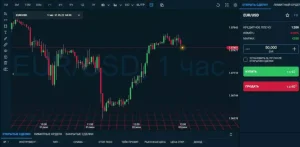Fibonacci retracements are popular among technical traders. They are based on critical numbers determined by the mathematician Leonardo Pisano, nicknamed Fibonacci, in the 13th century. The sequence of Fibonacci retracement is not as important as the mathematical relationships, expressed as ratios, between the numbers in the series. Let’s talk about how to use the Fibonacci retracement in different trading strategies.
Some words about Fibonacci retracement levels
Fibonacci retracement levels derived from the Fibonacci sequence are horizontal lines indicating possible support and resistance levels.
Each level is associated with a percentage. The percentage shows how much the price has rolled back from the previous movement. The Fibonacci levels are 23.6%, 38.2%, 61.8% and 78.6%. While not officially a 50% Fibonacci ratio, it is also used.
The indicator is helpful because it may be drawn between two significant price points, high and low. The indicator will then create levels between these two points.
Let’s say the price of a stock goes up $10 and then goes down $2.36. In this case, it has retraced 23.6%, a Fibonacci number. The Fibonacci numbers are found everywhere in nature. Therefore, many traders believe these figures are also relevant to the financial markets.
The main thing you should know about the Fibonacci tool is that it works better if the market is trending. The strategy is to go long (or buy) on a retracement at Fibonacci support when the market moves up. And go short (or sell) on a Fibonacci resistance level when the market moves DOWN.
Fibonacci retracement indicators may be used to place entry orders, set stop loss levels, or fixed price targets.


Turnkey Brokerage Solution For Your Business
Get the most profitable fully licensed fx/crypto brokerage software or ready-to-operate business in 48 hours. Best-in-class web & mobile trading platforms, sales-driven CRM, full integration with MT4/5, and 150+ payment providers.
What should we know about the Fibonacci sequence?
An Italian mathematician from Pisa is considered the author of the Fibonacci sequence in the West. It looks like this:
0, 1, 1, 2, 3, 5, 8, 13, 21, 34, 55……
- After 0 and 1, each number is the sum of the previous two numbers (1+2=3, 2+3=5, etc.).
- The number divided by the previous number is approximately 1.618 (21/13=1.6153, 34/21=1.6190).
- The number divided by the next highest number is approximately 0.6180 (13/21 = 0.6190, 21/34 = 0.6176). The approximation approaches 0.6180 as the numbers increase. It’s the basis for a 61.8% recovery.
- The number divided by two more digits above is approximately 0.3820 (13/34=0.382, 21/55=0.3818). The approximation approaches 0.3820 as the numbers increase. It’s the basis for a 38.2% recovery. Note 1 – 0.618 = 0.382.
- The number divided by three more digits above is approximately 0.2360 (13/55=0.2363, 21/89=0.2359). It’s the basis for a 23.6% recovery.
- The sequence extends to infinity and contains many unique mathematical properties.
1.618 is called the golden ratio. The reciprocal of 1.618 is 0.618. These ratios you may find in nature, architecture, art, and biology. The Greeks based much of their art and architecture on a specified proportion.

What are alert zones?
Retracement levels alert traders or investors to a potential trend reversal, resistance, or support area. Pullbacks are based on the previous move. The rebound is expected to win back some last decline, while the correction is expected to win back some prior advance. Once a pullback begins, analysts can identify specific Fibonacci retracement levels to monitor. As the correction approaches retracements, chartists should become more alert to a potential bullish reversal.
The opposite applies to a bounce or corrective advance after a decline. Once a bounce begins, chartists may identify specific Fibonacci retracement levels to monitor. As the correction approaches pullbacks, chartists should become more alert to a potential bearish reversal.
Remember, retracement levels are not hard pivot points. Instead, they serve as warning zones for a potential reversal. At this point, traders should use other aspects of technical analysis to identify or confirm a reversal. These can be candles, price patterns, momentum oscillators, or moving averages.
The definition of common retracements
If you want to know how to use the Fibonacci retracement, remember that such a tool shows four common retracements: 23.6%, 38.2%, 50%, and 61.8%. It is clear from the Fibonacci section above that 23.6%, 38.2%, and 61.8% stem from the ratios found in the Fibonacci sequence. The 50% retracement is not based on the Fibonacci number. Such a number stems from the Dow Theory claim that stocks often retrace half of their previous move.
Based on the depth, we consider the 23.6% retracement relatively shallow. Such retracements are suitable for flags or short pullbacks. Retracements in the 38.2%-50% range would be regarded as moderate. Even though the retracement level is 61.8% deeper, it can be called a golden retracement. After all, it is based on the golden ratio.
Shallow retracements do happen but require closer observation and a faster response to detect them.
Advantages and disadvantages of the Fibonacci retracement
Despite the popularity of Fibonacci retracements, these tools have some conceptual and technical flaws forex traders should be aware of if they decide to use them.
The use of the Fibonacci retracement is subjective. Traders utilize technical indicators in a variety of ways. Those traders who profit from the Fibonacci retracement believe in its effectiveness. Those who lose money say it’s an unreliable mechanism. Others believe that technical analysis is a case of a self-fulfilling prophecy. If all traders observe and use the same Fibonacci ratios or other technical indicators, the price action may reflect such fact.
The basic principle of any Fibonacci tool is a numerical anomaly that is not supported by any logical proof. Ratios, integers, sequences, and formulas derived from the Fibonacci sequence are only part of a mathematical process. It does not make Fibonacci trading inherently unreliable. However, this can be inconvenient for traders who want to comprehend the meaning of the strategy.
In addition, the Fibonacci retracement trading strategy only indicates possible corrections, reversals, and counter trend bounces. The system does its best to confirm other indicators and not give easily identifiable strong or weak signals.
How should we use the Fibonacci retracement levels?
Imagine a situation where you wanted to buy a particular stock but could not do so because the stock price spiked. In such a case, the most prudent course of action would be to wait for stocks to recover. Fibonacci retracement levels such as 61.8%, 38.2%, and 23.6% are potential levels that stocks could correct.
A trader identifies these retracement levels and positions themselves for a trade entry opportunity by plotting Fibonacci retracement levels. However, as with any indicator, use the Fibonacci retracement as a confirmation tool.
I would only buy shares after they have passed other checklist items. In other words, my buying belief would be higher if the stock had:
- Formed a recognizable candlestick pattern.
- Stop-loss coincides with the level of support and resistance.
- Volumes are above average.
Along with the above points, if the stop loss is also in line with the Fibonacci level, I know the trade setup is well aligned with all variables so I would go for a strong buy. The word «strong» indicates the level of confidence in the trade. The more confirming factors we use to study the trend and reversal, the more reliable the signal will be. The same logic applies to short trade as well.
Fibonacci retracement levels are static, unlike moving averages. The static nature of price levels makes it quick and easy to understand how to use the Fibonacci retracement.
Final words
The Fibonacci retracement indicator determines the end of a correction or bounces against a trend. Corrections and bounces against the trend often repeat part of the previous move. While the short 23.6% retracement does happen, the 38.2-61.8% zone covers most opportunities (with 50% in the middle). Such a zone may seem significant, but it is a reversal warning zone. Other technical signals are needed to confirm the reversal. Reversals can be confirmed by candles, momentum indicators, volume, or chart patterns: the more confirming factors, the more reliable the signal.
Fibonacci levels can be used as a risk management tool. Targets can be used to determine risk/reward before entering a trade and as an active management tool to identify new support and resistance levels.






